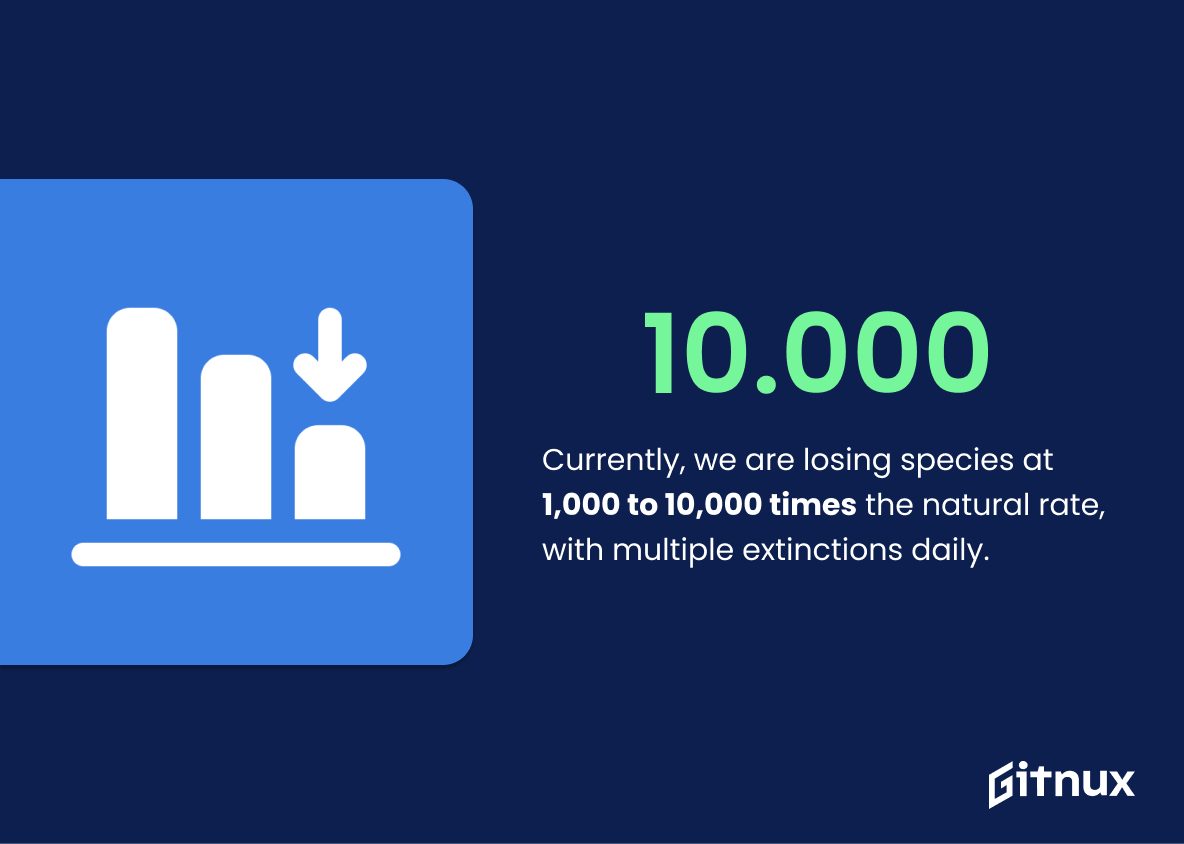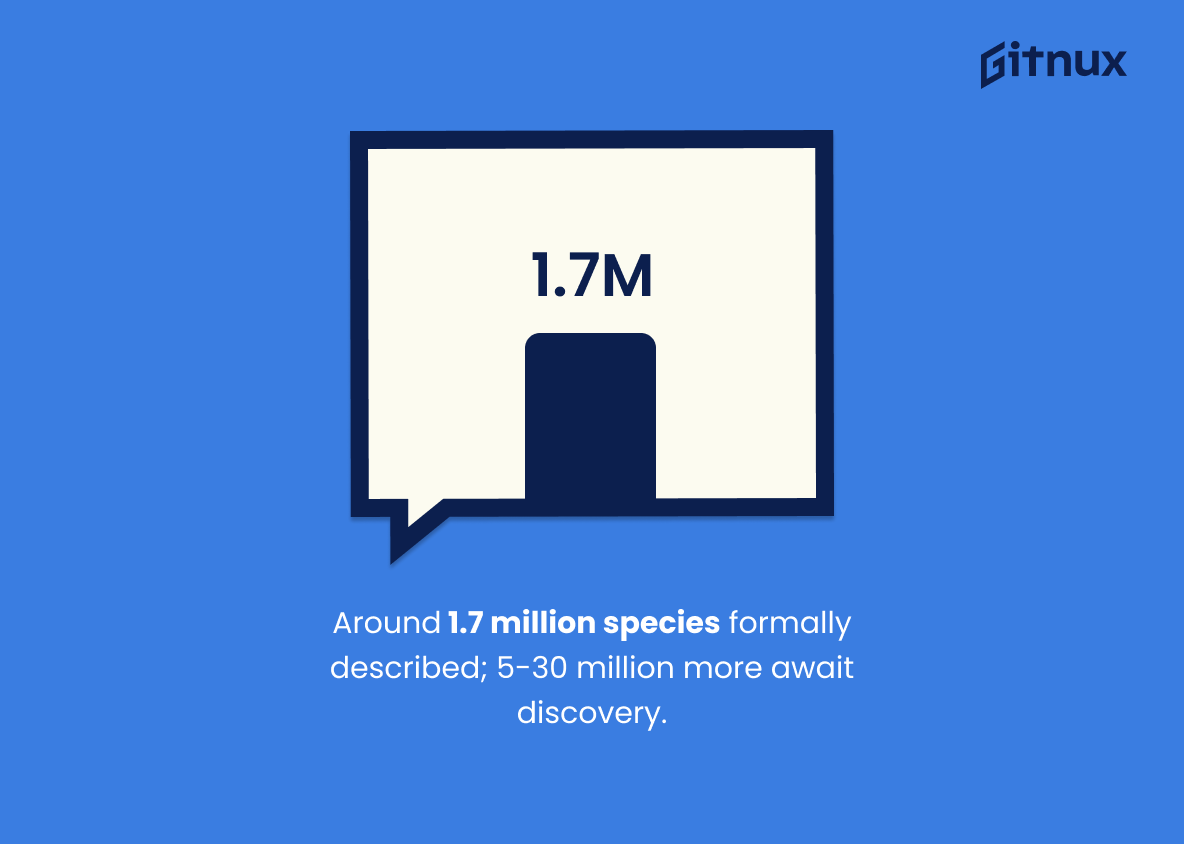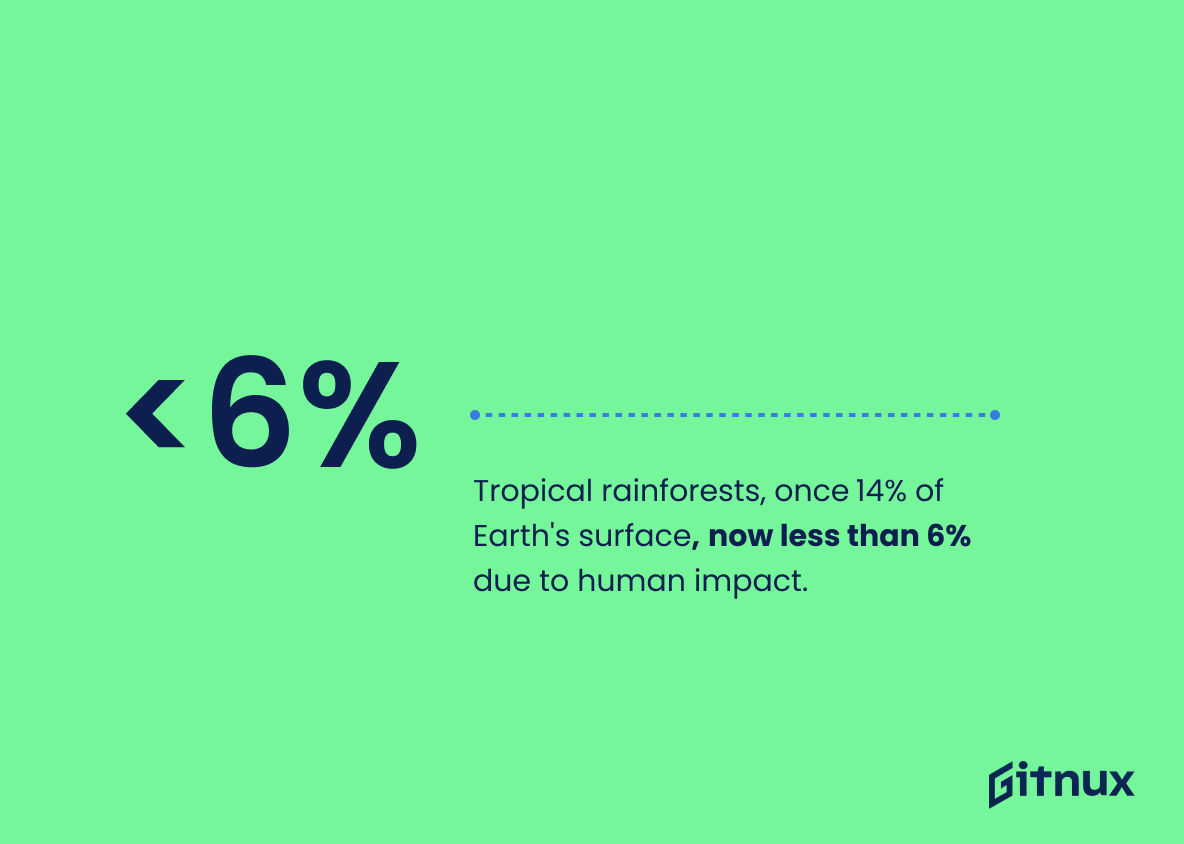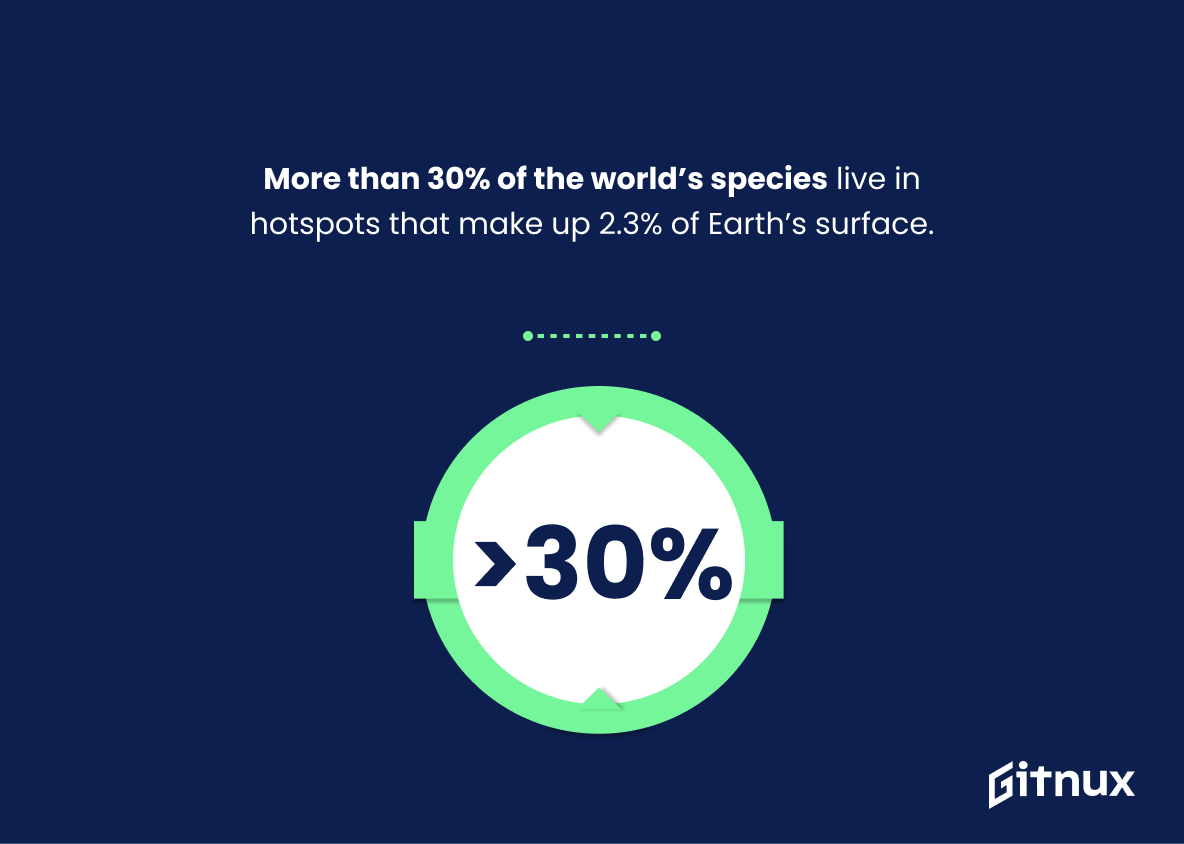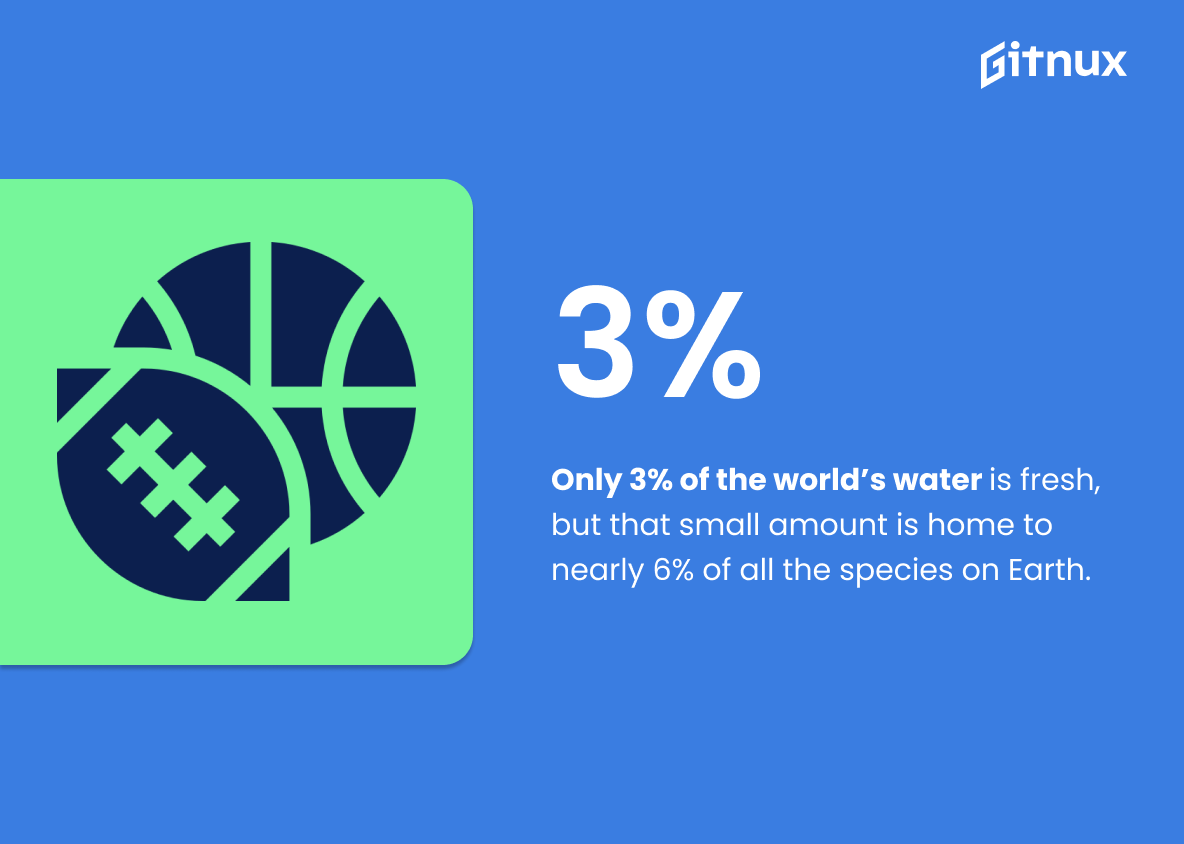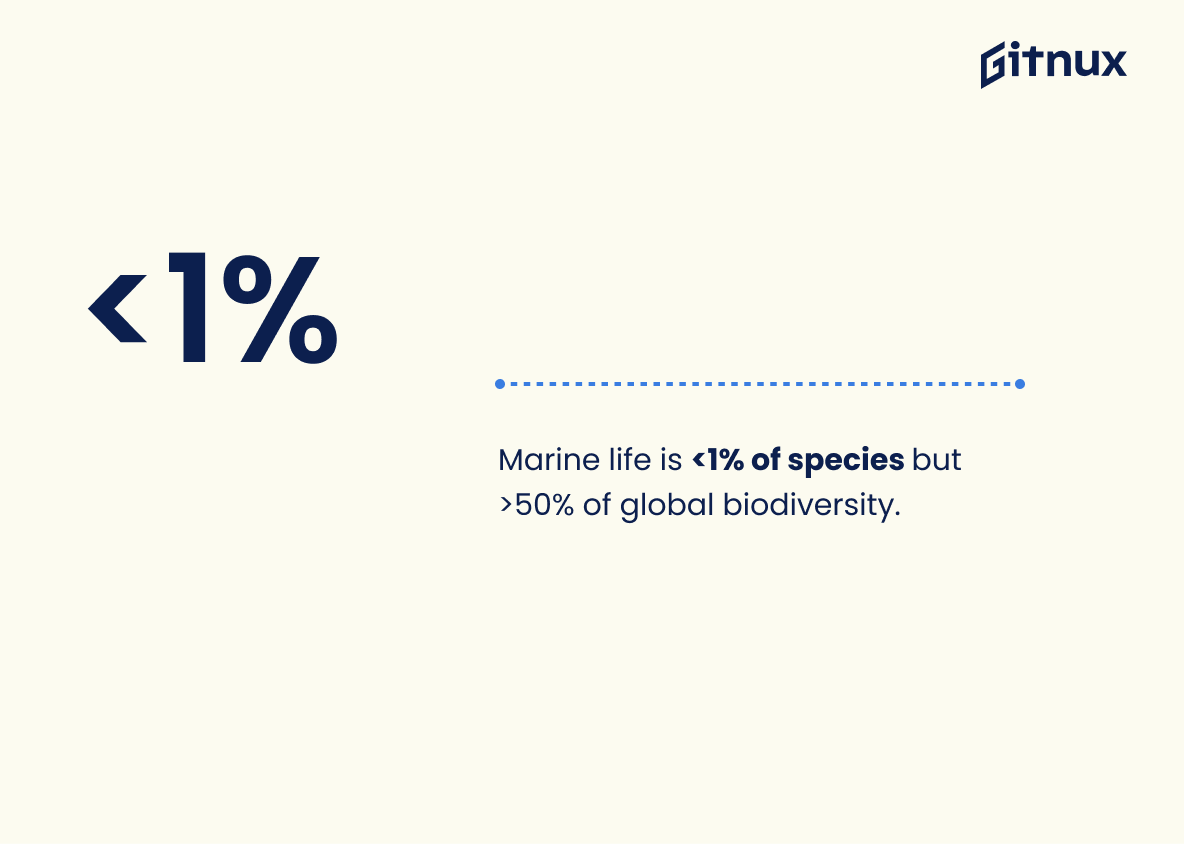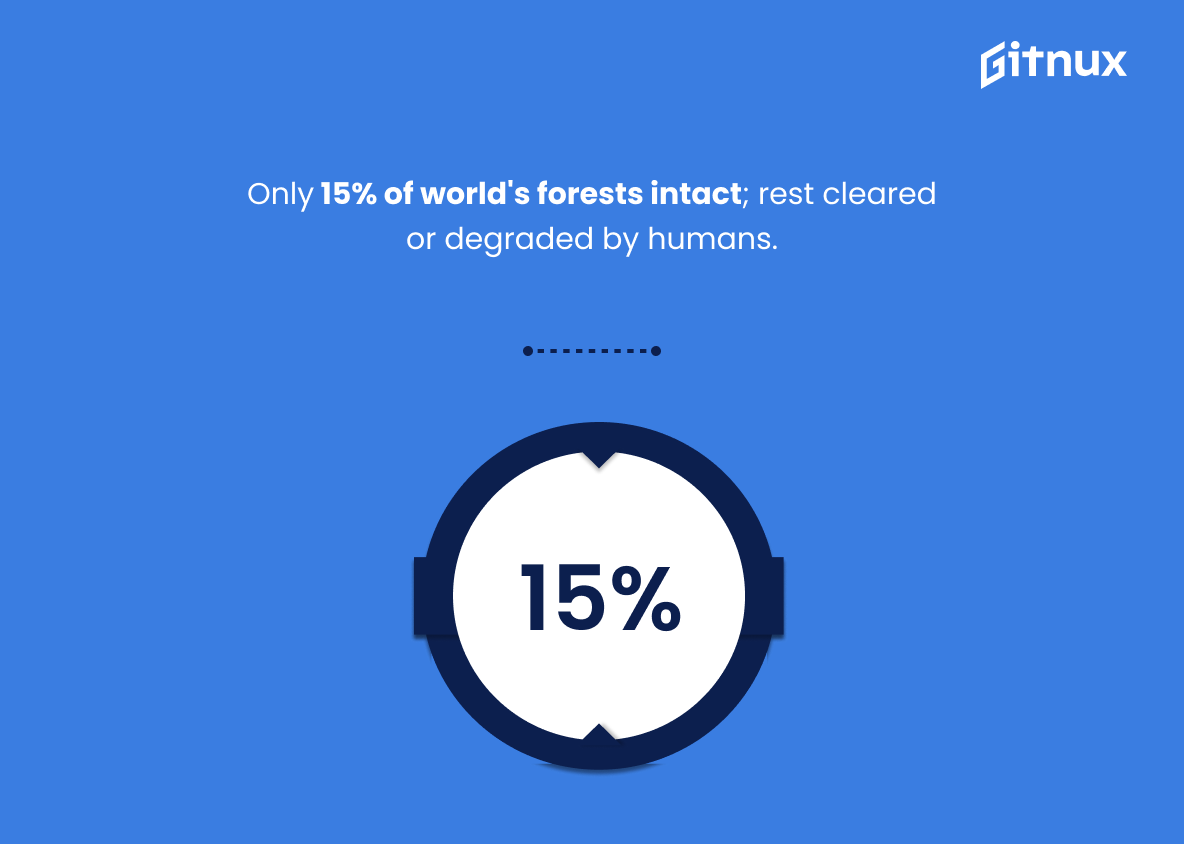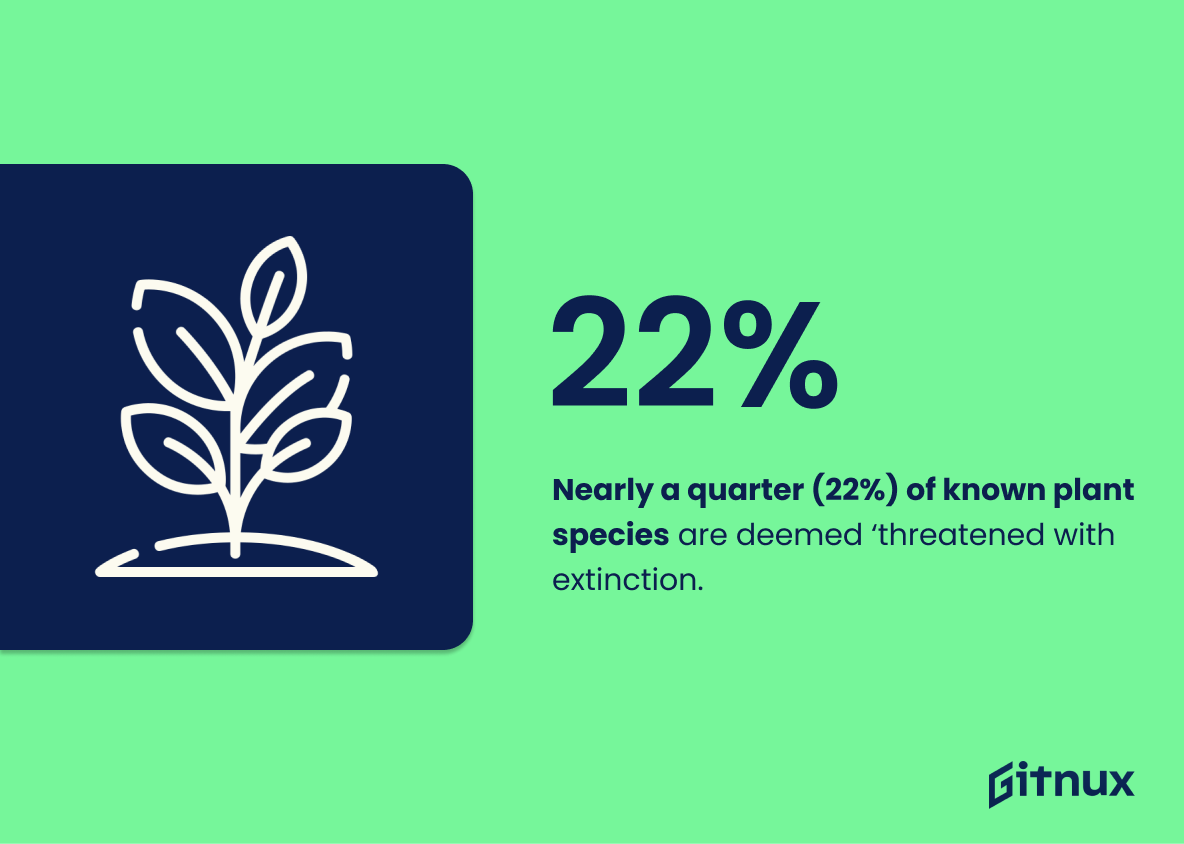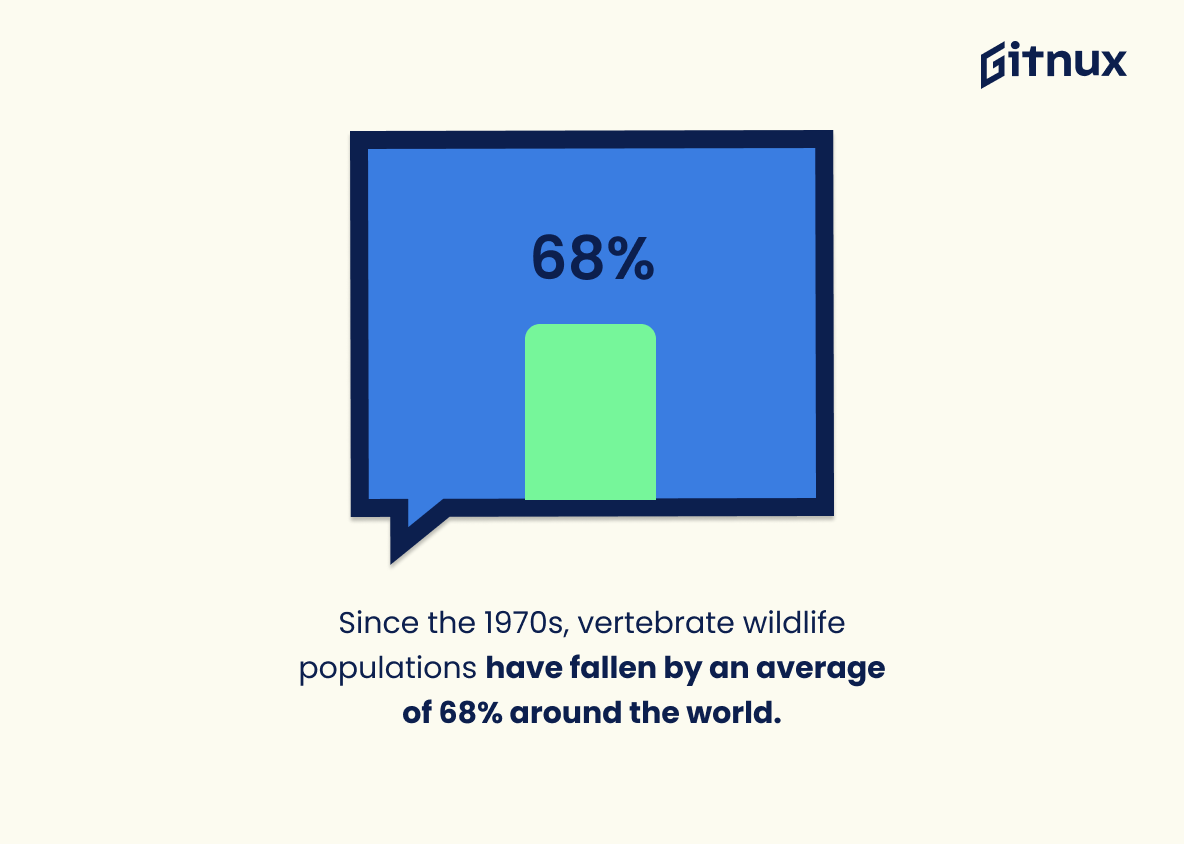In the intricate tapestry of life on our planet, biodiversity plays a significant and irreplaceable role. Each species, from the smallest microorganism to colossal blue whales, weaving a crucial thread that maintains the balance and health of our global ecosystem. But to comprehend the complexity and importance of biodiversity, we need more than just provocative words. This is where biodiversity statistics make a grand entrance. These invaluable data points serve not just as mere numbers, but as scientific barometers of the state of our planet’s health. Through this blog post, we delve into the fascinating realm of biodiversity statistics, acknowledging their importance in creating strategies for conservation and truly understanding the life that teems in our magnificent biosphere.
The Latest Biodiversity Statistics Unveiled
Currently, we are losing species at 1,000 to 10,000 times the natural rate, with multiple extinctions daily.
Delving into the vibrant tapestry of biodiversity statistics, one can’t help but be stalked by an alarming figure. The present rate at which we are losing species, a staggering 1,000 to 10,000 times the natural rate, with multiple extinctions daily, is a thunderbolt from the blue. It’s like watching the threads of life’s rich tapestry being pulled out one by one, having effects that are far-reaching and irreversible.
This statistic is the haunting melody in the symphony of biodiversity; each note reminding us of the profound changes our actions are orchestrating on the planet’s diverse life forms. It’s not just a number, it’s a prophecy of deteriorating ecosystems, diminished plans for conservation, and a shrinking genetic pool. This fearful plunge into an unknown where species disappear at such a colossal rate, serves as the poignant heart of any blog post hitting the drum for biodiversity statistics. It’s the soul-shaking echo of a future that might hold less music, less color, and less life.
Approximately 1.7 million species have been formally described so far while an estimated 5-30 million species are yet to be discovered.
Unveiling the hidden layers of our planet’s diverse ecosystem, the statistic underscores a striking premise: we are mere explorers on this extraordinary planet, having formally identified only about 1.7 million species so far – a mere fragment of the biological mosaic. It is profound in painting a picturesque world where an astounding 5 to 30 million species continue to outmaneuver our discovery equipment and scientific prowess, existing in secluded corners of our world. The proverbial iceberg analogy perfectly illustrates this scenario, the known species are merely the tip, while a staggering biological treasure trove remains submerged, still beyond the reach of our scientific investigations. This then elevates the pertinence of biodiversity statistics, as they not only quantify our existing ecological knowledge but also hint at the enormous untapped biological wealth yet to be discovered. In essence, they underscore the incessant need for intensified exploratory endeavours, and the need to conserve our rich and yet partly unknown biodiversity.
Tropical rainforests once covered 14% of the earth’s surface and due to the human impact it is now less than 6%.
Delving into the stark demise of tropical rainforests, from accounting for 14% of the earth’s surface to now less than 6%, provides an urgent narrative of biodiversity at risk. The diminished green cloak of our planet, reflected in these figures, is synonymous with a shocking decline in biodiversity. In the enthralling labyrinths of these rainforests, a prodigious variety of life forms find their safe haven. As we strip the Earth of its vibrant shroud, we also strip our world of the colors, songs, and patterns of countless species. The dramatic contraction painted by these numbers not only presents a worrisome picture of shrinking forested havens; it’s indicative of our declining biodiversity.
The top 17 countries with the most diverse and unique species are called “megadiverse,” and make up less than 10% of the global surface but support more than 70% of biological diversity on earth.
Delving into this captivating statistic, we unravel a profound narrative of our planet’s biological wealth. The “megadiverse” nations, barely covering 10% of the earth’s crust, are the pulsating heart of over 70% of global biodiversity. This single stat shimmering like a precious gemstone tells us that such concentrated hotspots of immense biological diversity are powerhouses of evolution, rich behemoths of species that are the real-life pages of earth’s evolutionary story. Imagine that if these areas face devastation, we could lose more than half of the biological heritage that decorates our planet. This critical fact serves as a compass, guiding conservation efforts to these vibrant, infused with life, and phenomenally diverse theatre of species. It does not just underpin the importance of their conservation but also boosts the understanding of biodiversity’s complex layers in a simplified manner.
More than 30% of the world’s species live in hotspots that make up 2.3% of Earth’s surface.
Highlighting this intriguing statistic reveals an astonishing disparity between the geographical space and its concentration of biodiversity, making it an essential focal point for the discourse on Biodiversity Statistics. This revelation accentuates the vast and integral role that tiny, often overlooked hotspots play in harboring a significant chunk of global species. Given that these hotspots constitute a mere 2.3% of Earth’s surface, yet more than 30% of the world’s species call them home, depicts their extraordinary significance and warrant immediate conservation attention. Their potential destruction could manifest in devastating losses for the global biodiversity, further emphasizing the urgent need for protective measures. This statistic serves as a beacon, guiding our collective effort to preserve and enhance our planetary biodiversity.
Only 3% of the world’s water is fresh, but that small amount is home to nearly 6% of all the species on Earth.
Delving into the fascinating world of biodiversity statistics, one may be surprised to uncover the immense role played by just a minuscule slice of our global resources. Particularly, it’s astonishing to perceive that the world’s scarce 3% fresh water resource cradles nearly 6% of the Earth’s innumerable species. This statistic powerfully illustrates the critical importance of fresh water systems in fostering and maintaining global biodiversity. Even more intriguing, it underscores an impressive wealth of life packed into such limited fresh water environments, emphasizing urgency and gravity of conserving these critical pockets of biological diversity amidst the world’s increasing water stress scenarios.
An estimated 40% of the world’s economy is directly or indirectly dependent on biodiversity.
Unraveling the threads of this incredibly noteworthy statistic, we begin to perceive the inherent connection between seismic world economies and the myriad tapestry of biodiversity. The statistic paints a vivid picture, holding up a mirror to our local and global economies, reflecting 40% of their vitality pulsating from their direct or indirect dependencies on biodiversity.
It serves as a poignant reminder of the interconnectedness of our actions and their impact on the world. It underscores the economic reliance on biodiversity, highlighting the crucial role biodiversity plays not just in maintaining ecological balance, but also in ensuring economic prosperity. This statistic transforms the way we view biodiversity, from a singularly environmental concern to an economic cornerstone, thereby magnifying the importance of safeguarding our planet’s biodiversity.
Moreover, the statistic’s relevance extends well into every corner of society’s consciousness- it fuels the narrative on sustainable development, makes a compelling case for stringent environmental regulations, and reiterates the need to assess economic growth in light of its environmental footprint. This statistic is a keen-eyed revelation, a call to action and a testimony to the latent economic power nestled within Earth’s biodiversity.
Less than 1% of species on the planet are marine life, however, they represent over half of global biodiversity.
Highlighting this captivating statistic underscores the staggering significance of marine life in the intricate tapestry of our planet’s biodiversity. Despite constituting less than 1% of all species, these riveting dwellers of the blue abyss astonishingly account for over half of global biodiversity. It’s a firm reminder of the oceanic world’s tremendous, often unseen, contribution to life’s diverse spectrum on Earth. In a biodiversity-focused blog post, this statistic inspires awe and appreciation for our oceans’ irreplaceable role as vast, fertile cradles of life, and spotlights the urgency in safeguarding this rich biosphere from environmental threats.
Biodiversity in the European Union has decreased by 13% between 1990 and 2015.
Understanding the humbling rate of biodiversity loss in the European Union is like having our fingers on the pulse of our ecosystem’s health. This 13% reduction from 1990 to 2015 isn’t just a number, but a reflection of our collective actions over a quarter of a century.
It profoundly communicates the silent but significant changes in our environment. Imagine this: For every 100 species that thrived in 1990, only 87 remained a quarter-century later. These lost species could have contained the answer to unsolved medical mysteries, or played a unique role in the ecosystem that is now left empty.
Furthermore, this statistical shift offers a tangible link between human activities and the spiralling global environmental crisis. The decrease signifies that we’re losing much more than just species; we’re losing essential stabilities of life. Overall, the percentage breathes life into the urgency of our need to conserve biodiversity.
Only about 15% of the world’s forests remain intact, with the rest having been cleared or degraded by humans.
Peeling back the curtain on the plight of our planets forest cover, this striking statistic interweaves a story of vast devastation. A mere 15% of the world’s forests stand untouched, unscathed, in their original majestic splendor. The remaining 85% lays testament to relentless human encroachment. In the vibrant tapestry of biodiversity statistics, this figure presents a stark, distinctive thread.
This narrative deviates drastically from the vision of a balanced biotic planet. Forests are the planet’s lungs, its life sustaining organs. They are key safeguards against climate change, and a vital stronghold for biological diversity. Retaining a mere 15% of pristine forests means potentially losing an astronomical number of species, many as yet undiscovered. This paints a grim picture in terms of genetic variety, ecological services, and irreplaceable cultural values.
In the quest of unveiling the real status of biodiversity, this statistic stands as a grim reminder of the mounting adverse human impact. Actively shielding what remains intact, and regenerating what’s been lost, underscores our ensuing dialog on biodiversity, creating a resonating urgency for forest conservation and sustainability conversations.
Nearly a quarter (22%) of known plant species are deemed ‘threatened with extinction.’
Understanding the plight of our plant friends can color in a vivid picture of our planet’s health status. The revelation that 22% of known plant species are dancing on the brink of oblivion serves not only as a stark warning but also a critical waypoint on the roadmap of biodiversity. It speaks volumes about the balance, or rather, the imbalance, of life on Earth.
This statistic is especially alarming considering the pivotal role plants play in biodiversity. They lay the foundation for all terrestrial ecosystems, provide food, oxygen, and medicines, and play a crucial role in the global carbon cycle.
As such, these numbers illuminate a story of ecological interconnectivity and the vulnerability of ecological structures dependent on these threatened species. It underscores the urgency of biodiversity conservation efforts and breeds a deeper understanding of the existential threat to our shared biosphere. So, with every botanical warrior we lose, we risk toppling steadied ecosystems and unravelling the rich tapestry of life on Earth, which, in turn, rewrites the narrative of our own survival.
Since the 1970s, vertebrate wildlife populations have fallen by an average of 68% around the world.
The aforementioned statistic paints an alarming picture of wildlife as we currently know it. A 68% decline in vertebrate wildlife populations serves as a glaring red warning light on the dashboard of global biodiversity. In the grand tapestry of biodiversity statistics, this specific number threads a compelling narrative. It spells out the considerable hemorrhage in the animal kingdom that has occurred since the 1970s.
This seismic shift isn’t just about one species; it’s affecting multiple classes of vertebrates. For the readers of a blog post about biodiversity statistics, this graphic data means a direct affront to the interconnected mosaic of life. Vertebrates play an essential role in the functioning of various ecosystems, impacting everything from the health of environments to the balance of natural food chains. Hence, this statistic serves as a stark pointer towards the urgent need for conservation measures to ensure the sustained diversity and richness of life on our planet.
Birds’ species are declining with a 40% of world’s population being in significant decline.
The pulsating heart of our planet, biodiversity, weaves an intricate web of life that sustains us on many levels – from the air we breathe to the food we eat. Yet, when reading a statistic stating that 40% of the world’s bird species are in significant decline, it’s like discovering a tear in this delicate tapestry.
As avian ambassadors of our ecosystems, birds play a pivotal role in maintaining balance, controlling pests and aiding in pollination. Their declining numbers serve as a grim reminder of the biodiversity crisis, echoing alarms for the deteriorating health of our planet. They underscore the urgent need for heedful actions and policy transformations to halt, and hopefully reverse, this trend.
So, the next time you marvel at the feathered spectacle in the clear blue sky, remember – what may seem like an ornithological concern has profound implications for global biodiversity and ultimately, human survival. Each chirp less heard is a note less played in Earth’s symphony of life.
Conclusion
In conclusion, biodiversity statistics give us invaluable insights into the range and richness of life on our planet. They are more than just numbers; they are a report card on the health of our ecosystems. From species loss rates to the impact of global warming, these statistics paint a vivid picture of our planet’s ecological status quo. Therefore, understanding and advocating for improved biodiversity should be at the forefront of our priorities. These statistics serve as a wake-up call for us to be more considerate of our environment, urging us to implement more sustainable practices. In this way, we secure not just the survival of numerous species, but also our own future. It is hoped this understanding kindles a sense of urgency and responsibility in everyone regarding biodiversity preservation. Let the statistics not just be numbers we read, but also the motivation we need to make a difference.
References
0. – https://www.www.cbd.int
1. – https://www.www.umich.edu
2. – https://www.www.conservation.org
3. – https://www.www.worldwildlife.org
4. – https://www.www.wri.org
5. – https://www.www.wwf.eu
6. – https://www.www.bbc.com
7. – https://www.www.un.org
8. – https://www.www.birdlife.org
9. – https://www.www.bio.org
10. – https://www.www.kew.org
